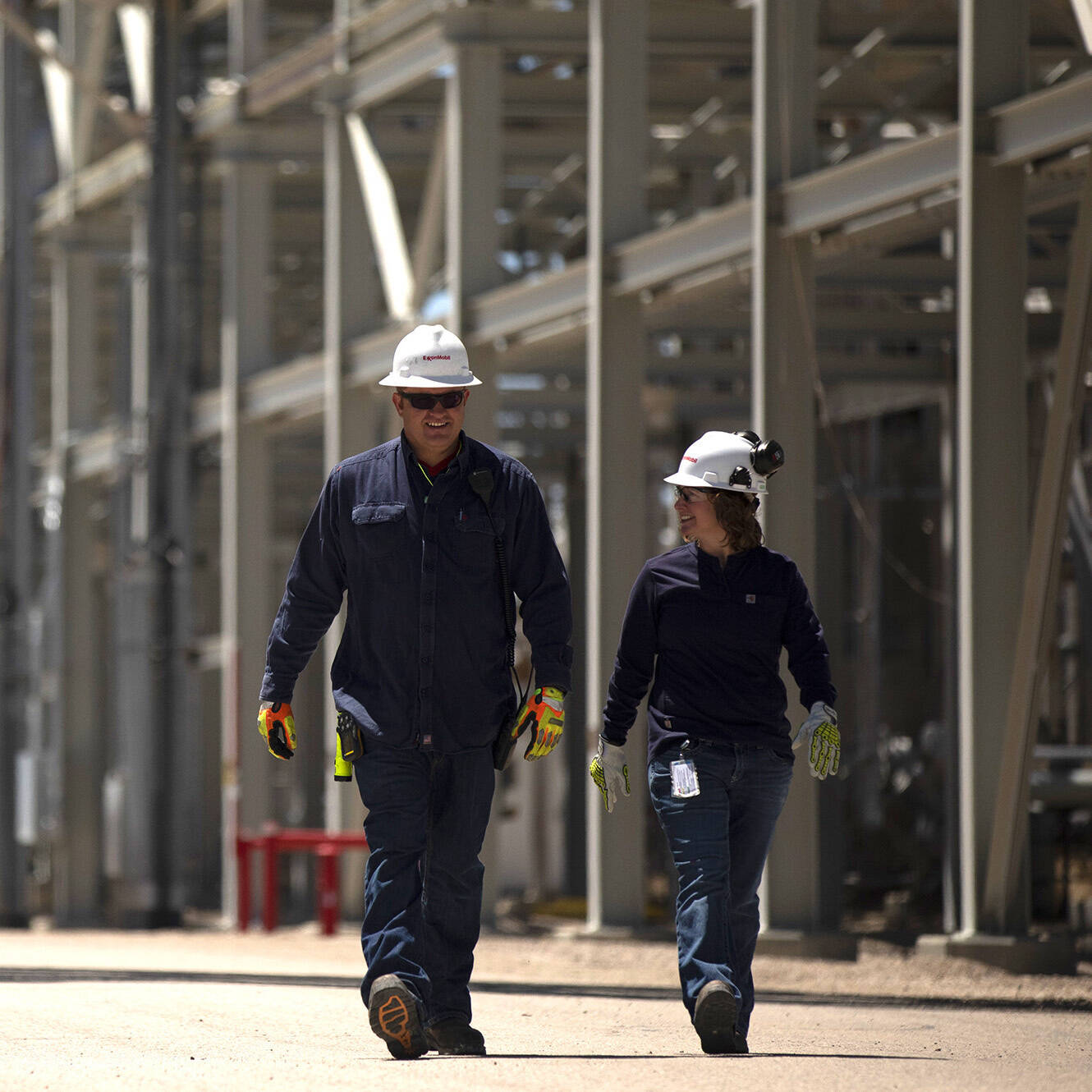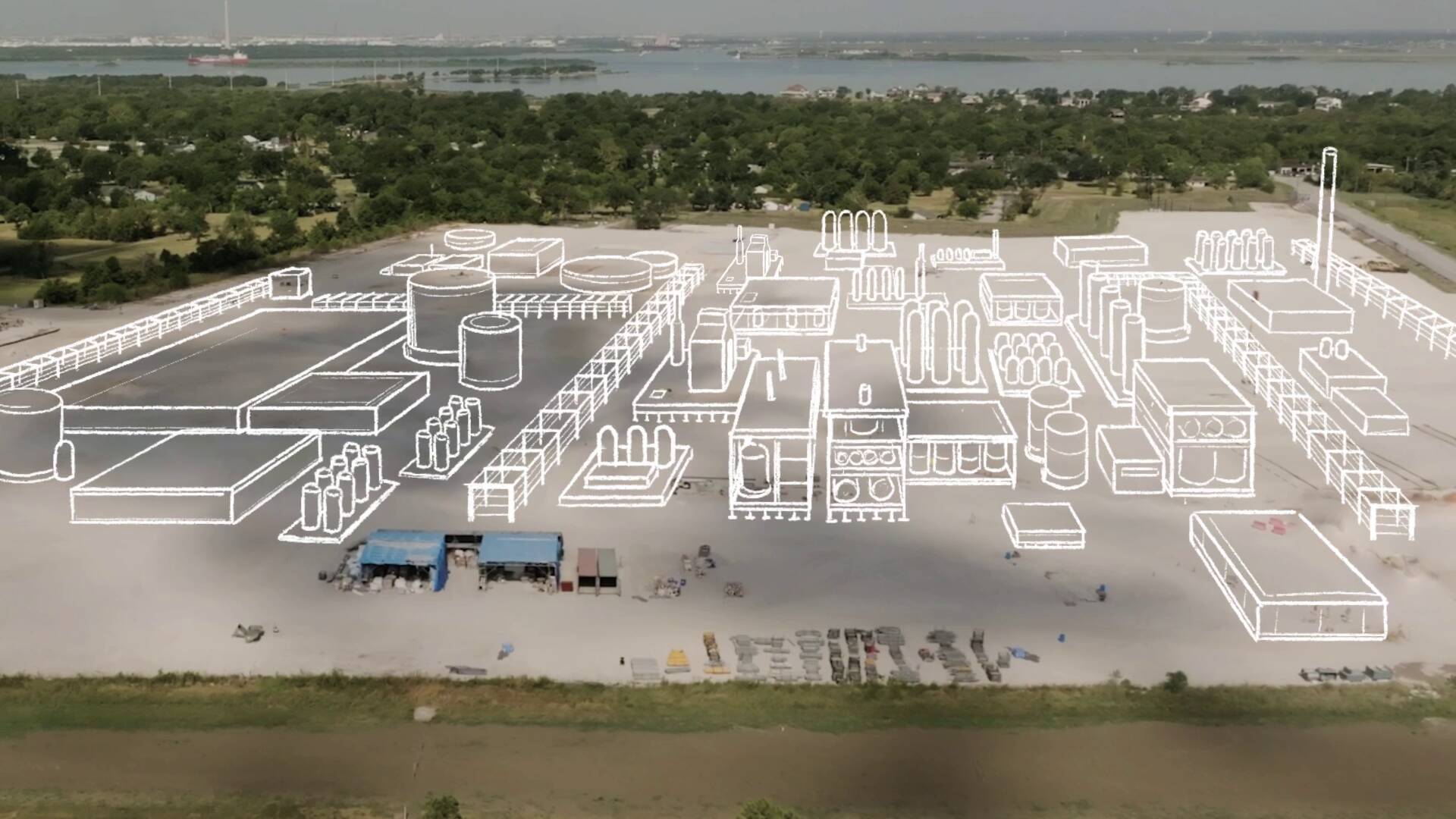our technology
ExxonMobil™ Carbon Capture & Storage
Mitsubishi Heavy Industries
A technology alliance advancing real solutions
Our collaboration with Mitsubishi Heavy Industries leverages the technical expertise of two companies that are leading in the carbon capture and storage space.
Learn more about our announcement
LaBarge
Expanding capacity to meet demand
LaBarge, Wyoming is home to our facility where we have been capturing carbon for more than 30 years. New investments at LaBarge means that we’ll capture more carbon going forward.
Learn more about how we’re delivering real world progress

ExxonMobil leadership and progress
9 M
~150 M
35 %
For a deeper dive, watch our experts tell this story of growth, progress and excitement about the future of carbon capture and storage.
See how we're growing CCS
These are just some of the benefits we can bring to the market:
- Existing pipeline infrastructure allows greater speed to market
- Experience with permitting process creates streamlined approach to project development
- Accessible infrastructure near emission sources
- Integration enabled by 925 miles of pipelines in Louisiana, Texas and Mississippi near emitters
See how we’re delivering industrial solutions.
ExxonMobil’s Low Carbon Solutions team can help you build a holistic emissions-reduction program that includes carbon capture and storage.
Safety at a glance
Safety is priority one at ExxonMobil and scaling carbon capture and storage requires specific considerations.
- Potential carbon capture and storage locations are carefully selected to ensure carbon dioxide remains safely and securely underground.
- CO2 is typically stored at depths of greater than 800 meters below the earth’s surface.
- Thick, impermeable rocks seal the formations to hold carbon dioxide in place.
- Stored carbon dioxide is monitored with technologies to ensure safe and permanent containment.
Why is carbon capture and storage needed?
The United Nations Intergovernmental Panel on Climate Change and the International Energy Agency agree that carbon capture and storage is one of the most cost-effective ways to decarbonize emission-intensive sectors, including chemicals and refining, cement production, and the iron and steel industries.
Additionally, carbon capture and storage is recognized as one of the few technologies that can enable negative carbon dioxide emissions when combined with bio-energy or direct air capture. According to the Center for Climate and Energy Solutions, carbon capture and storage can capture more than 90% of emissions from power plants and industrial facilities.3
Let's deliver
Real world progress
We’re a leader in the energy transition now, and at scale. With over 140 years of innovation behind us, we’re paving the path for progress with scaling infrastructure and end-to-end low carbon solutions. We’re accelerating the world’s path to decarbonization.
The proof is in our progress.
Explore more
Explore further insights into ExxonMobil's impactful initiatives in CCS.
Delve into our innovative projects, community partnerships, and commitment to sustainability and safety.
FOOTNOTES:
- Global CCS Institute 2022 Cumulative CO2 Capture Facilities Analysis conducted for ExxonMobil
- GCCSI Historical Carbon Capture Volumes 2023
- Carbon Capture | Center for Climate and Energy Solutions




